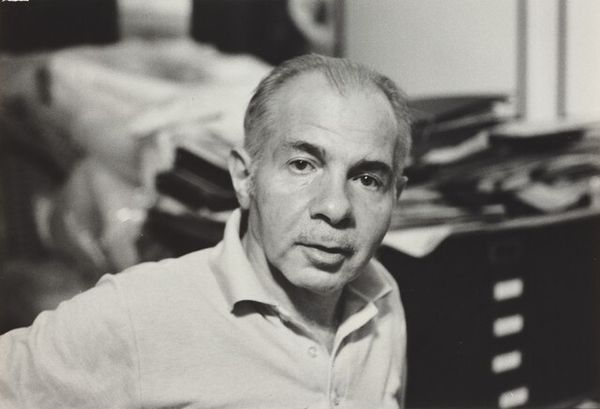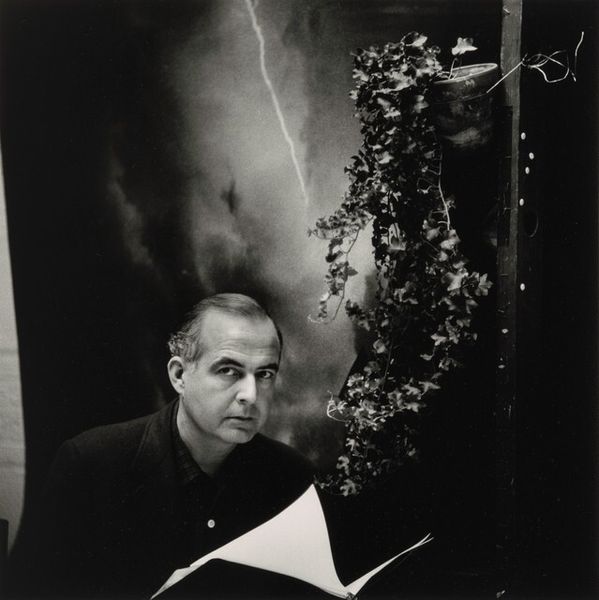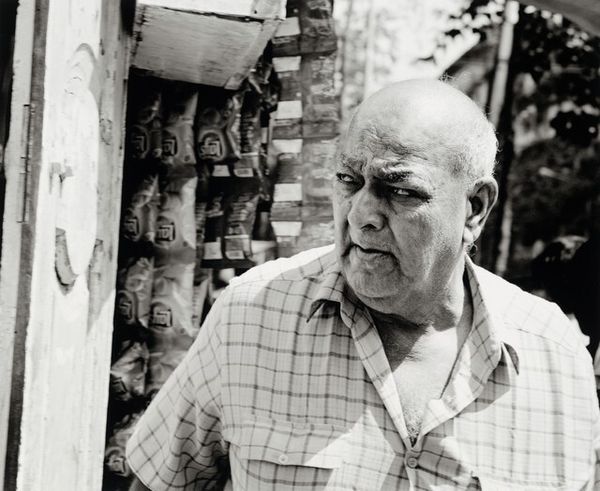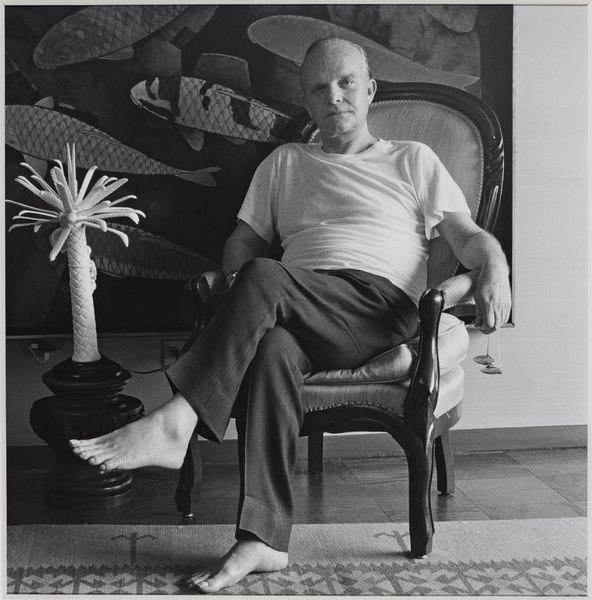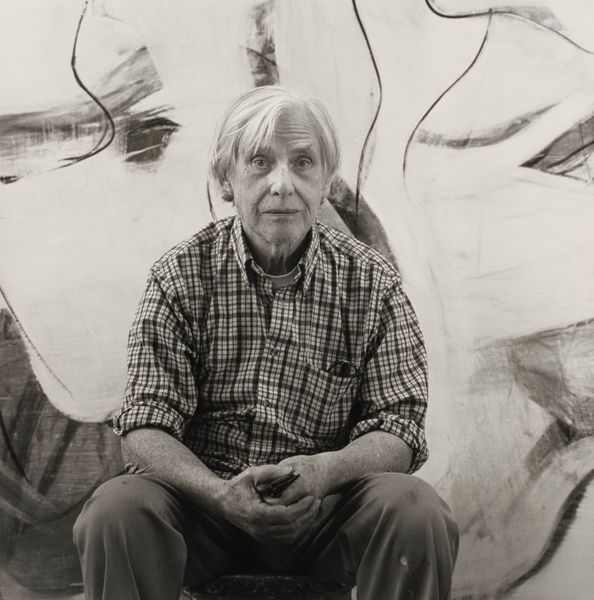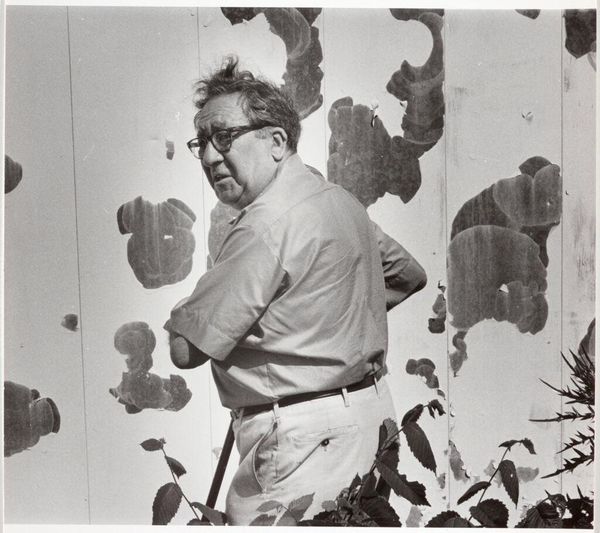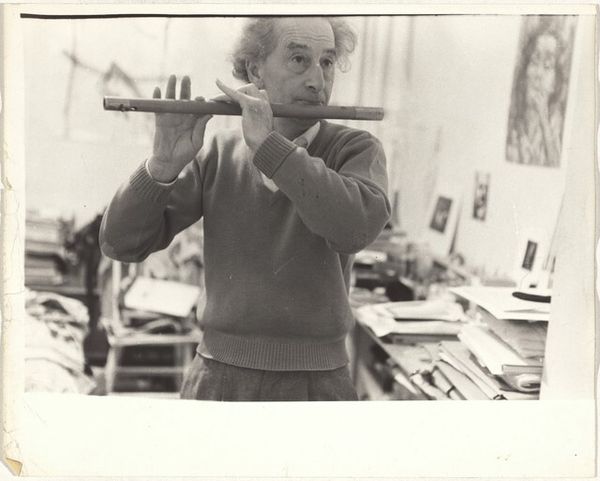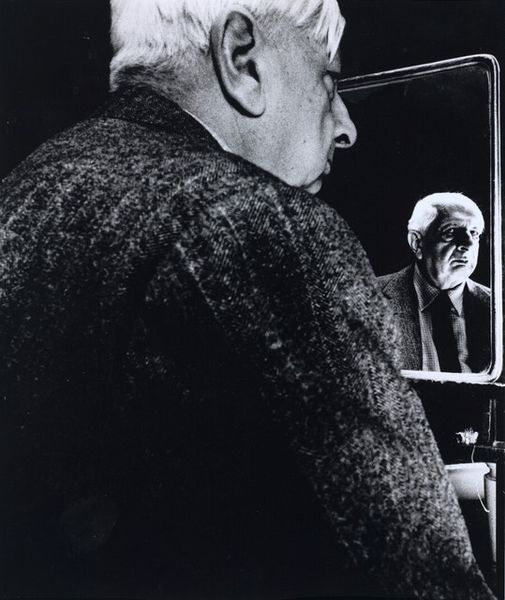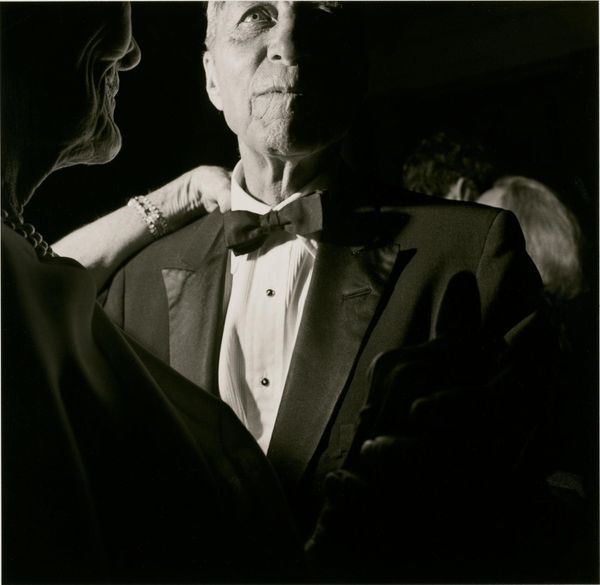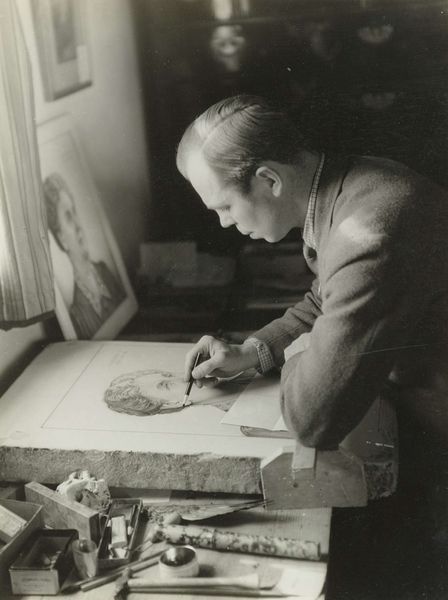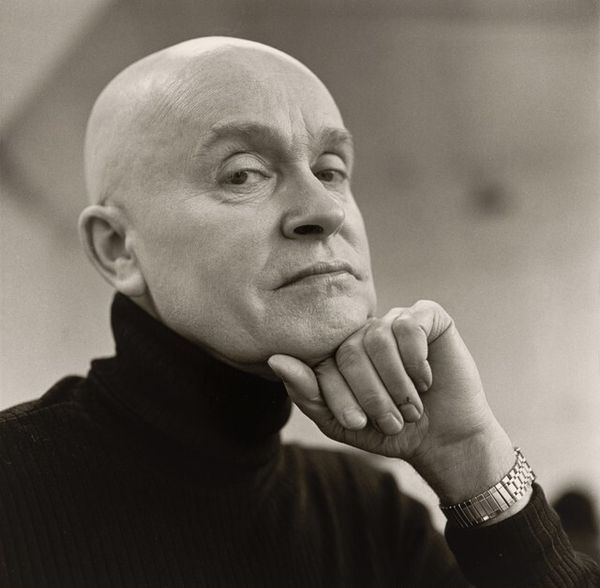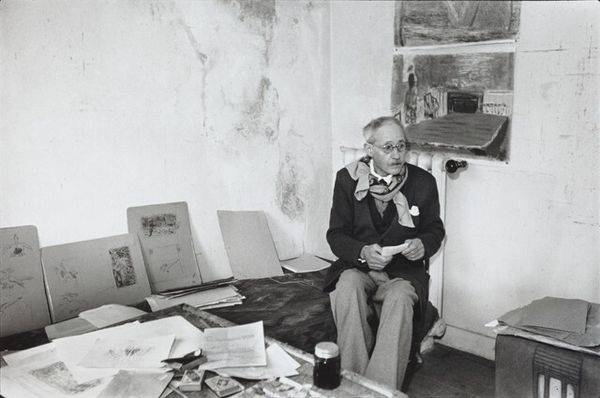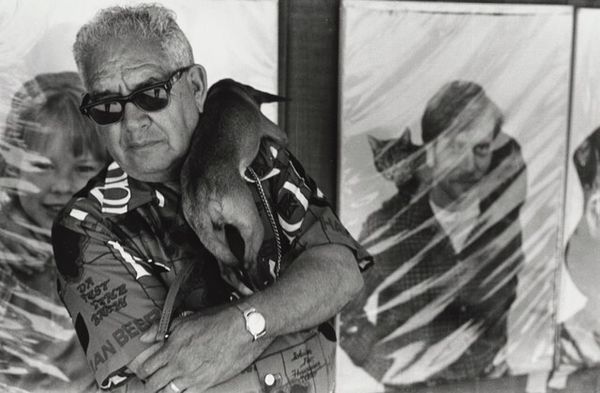
photography
#
portrait
#
self-portrait
#
conceptual-art
#
black and white photography
#
black and white format
#
photography
#
black and white
#
single portrait
#
monochrome photography
Dimensions: image: 25.4 × 25.1 cm (10 × 9 7/8 in.) sheet: 35.4 × 27.7 cm (13 15/16 × 10 7/8 in.)
Copyright: National Gallery of Art: CC0 1.0
Editor: Here we have Nancy Lee Katz's 1989 photograph, simply titled 'Jasper Johns.' It's a stark, monochrome portrait. I'm struck by the contrast; his serious expression against the almost playful map of the United States behind him. How do you interpret this work? Curator: The map behind Johns is more than just playful. It acts as a complex visual field loaded with symbolic weight. Consider how maps, historically, denote power, ownership, and a sense of belonging. In his self-portrait, Johns merges his own identity with this potent symbol. It asks, what does it mean to be an American artist? Are we defined by the spaces we occupy, both physical and cultural? Editor: So, you're suggesting the map operates as a commentary on American identity? But why present it so starkly, in black and white? Curator: The lack of color simplifies and universalizes the theme, moving away from specific regional associations to a broader, almost archetypal representation of the USA. And let’s not forget Johns's renowned work with flags. He deliberately blurs the lines between the representation and the real. Is he challenging the conventional notions of portraiture itself? Editor: That's fascinating. The absence of color almost feels like a detachment, pushing us to think about the underlying concepts. Curator: Exactly. He uses this photograph to examine how identity and place are constructed and perceived, much like religious iconography. This forces viewers to reconsider their relationship with those established visual signs and our assumptions around those things. What does that do for your viewing experience? Editor: I never thought about it that way! I see that there’s far more happening than first meets the eye. The choice of the map is such a charged element! Curator: Precisely. It makes us look critically not only at the image, but also at the nation and ourselves.
Comments
No comments
Be the first to comment and join the conversation on the ultimate creative platform.
